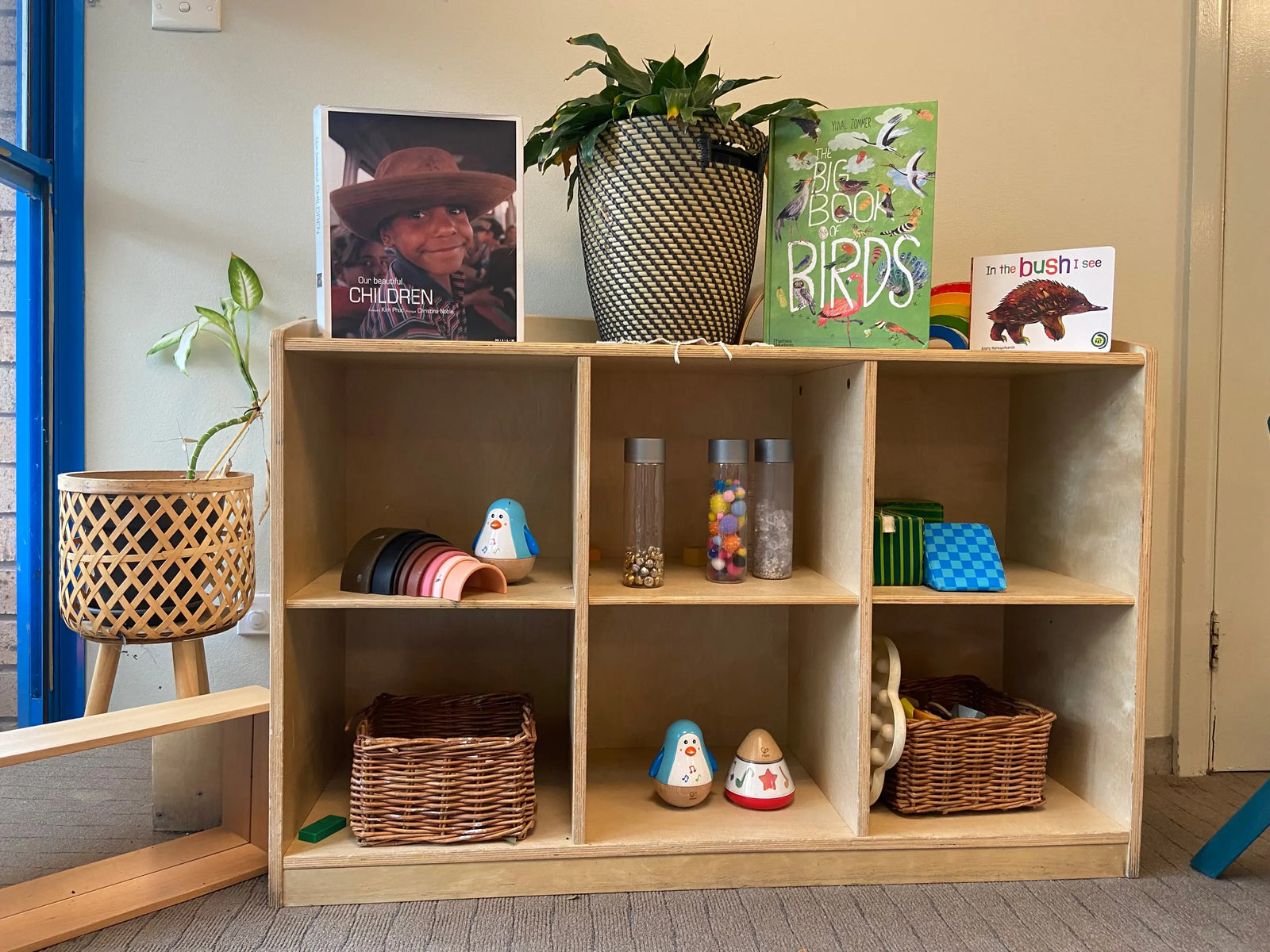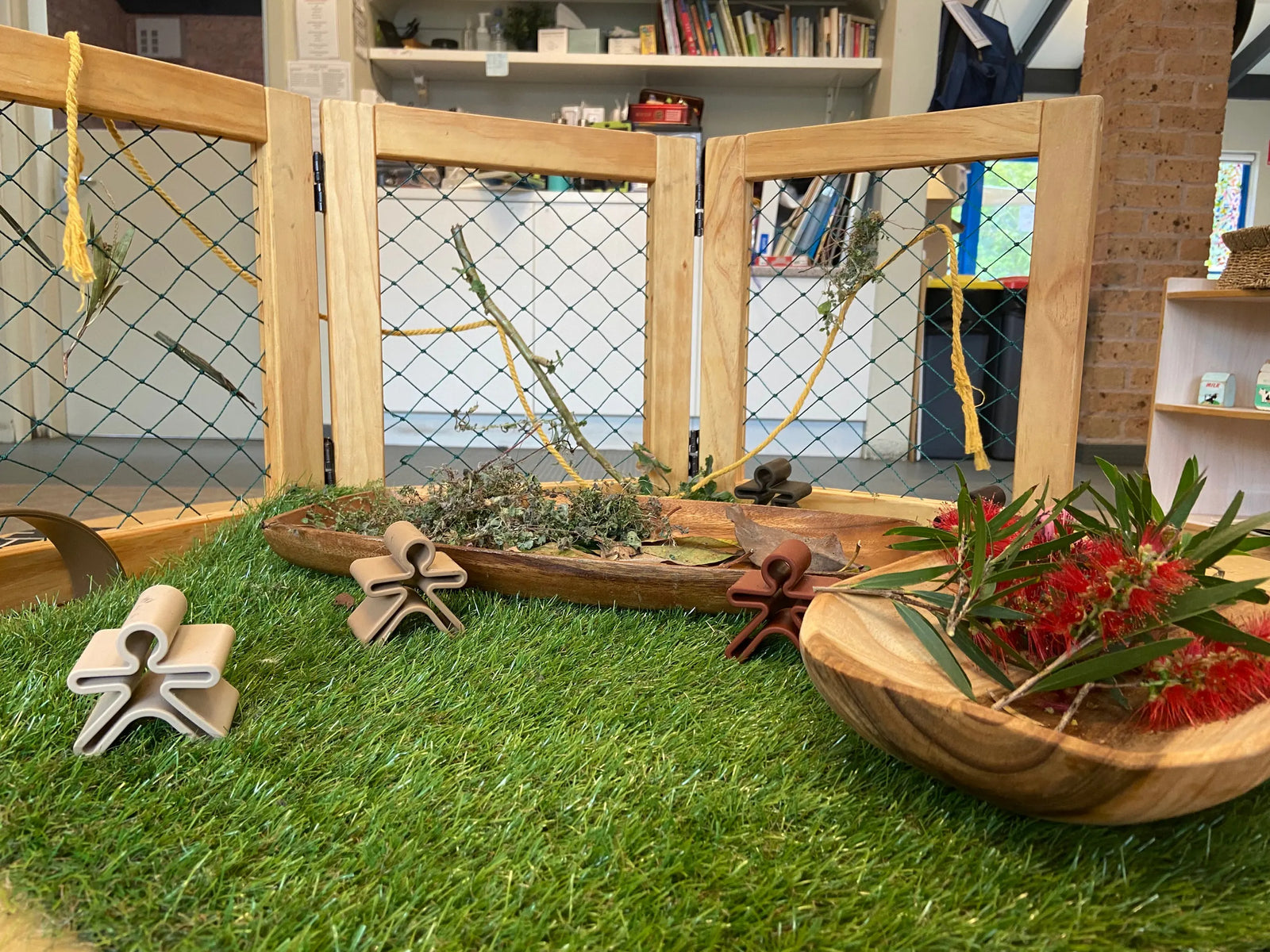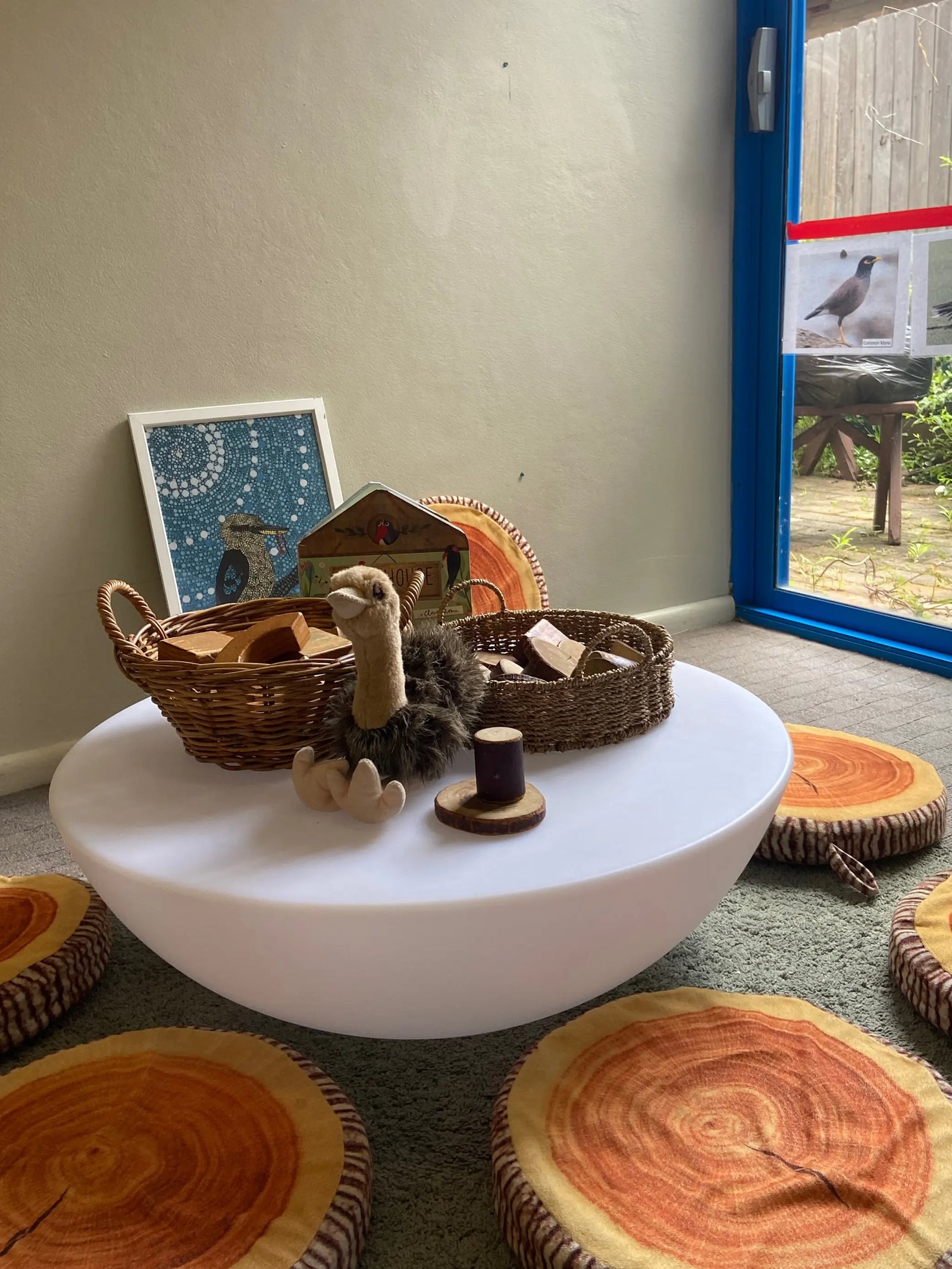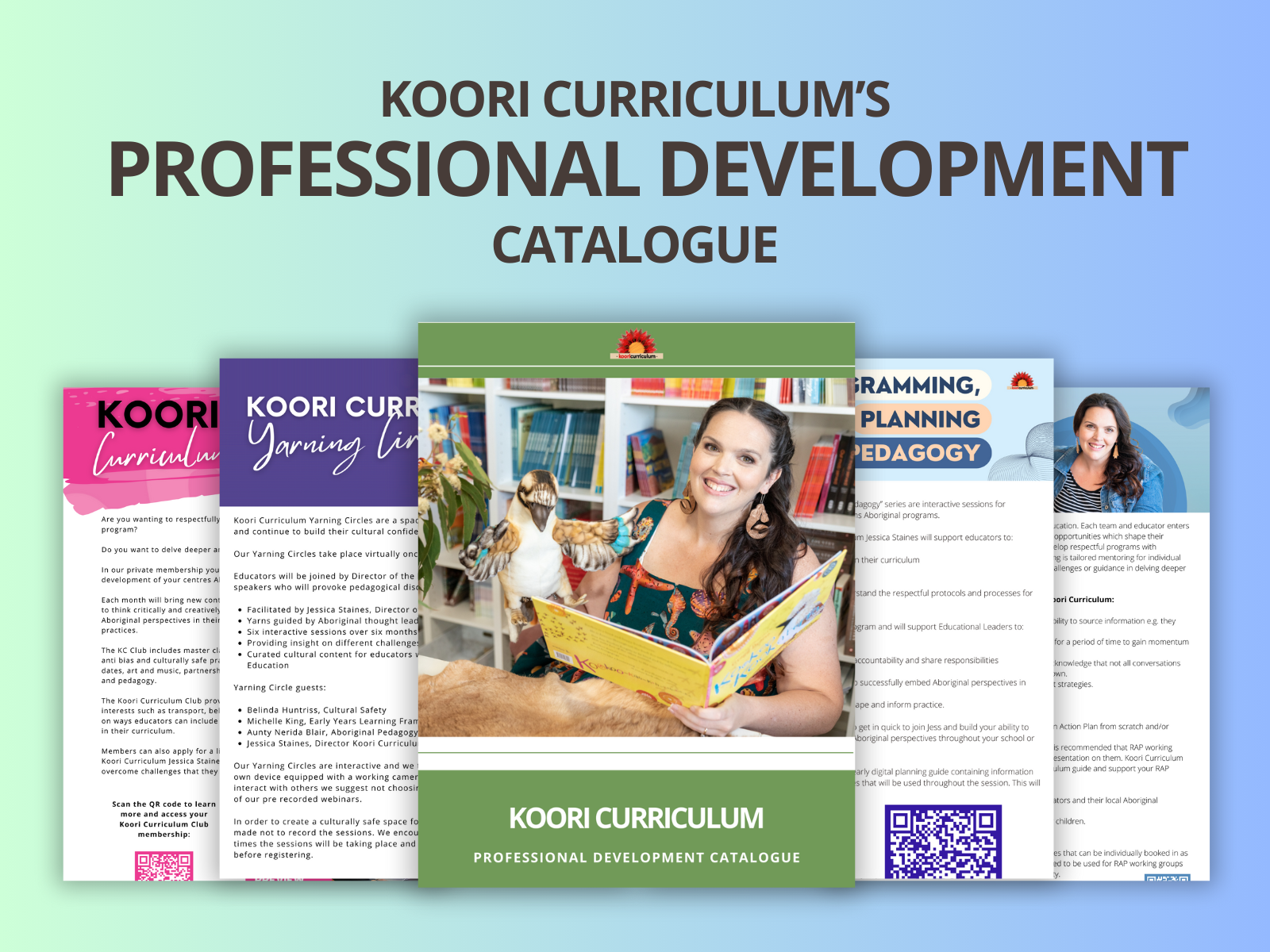
Embedding Indigenous Perspectives in the Nursery Room by Sheilla Bella Trisnata
Embedding Indigenous perspectives in the nursery room can be daunting. When planning for experiences or the environment, as educators, we often think, “Is this too tokenistic?”, “Are the children too young to understand this?”, “Where are the scholarly papers, textbooks and articles to help us embed Indigenous teachings within this age group?”.
My name is Sheilla, and since graduating with my teaching degree, I have joined Deborah Little Early Learning team- an Inner west council centre in NSW. I am lucky to be in a team with ambitious leaders who thrives for inclusion, including embedding Indigenous perspectives within our everyday practice.
They often share their knowledge, ideas and experiences, which has opened my perspective and built my confidence. After months of practise and reflecting, let me tell you this: It is possible to introduce children to Indigenous perspective from an early age! Through this blog post, I will share ways we could embed Indigenous perspectives in the nursery room through our teaching and practice.
1. Understanding children’s interest

To avoid the trap of cultural tokenism, we must first understand the children’s interests. When experiences and learning spaces are planned through children’s interests, they become more purposeful, meaningful and relatable for the children (McWilliam & Casey, 2008). For this reason, we must first identify their interest and embed Indigenous perspectives surrounding it. For example, we have observed children in our room taking an interest in viewing birds through our glass door.
To extend this interest, we have since facilitated a variety of texts and resources on birds, including storybooks and artworks by Indigenous writers and artists. Conversations about Indigenous perspectives shared in the stories authentically occur. We started discussing about sharing our space with the local birds and even created our own bird bath.
We also ventured into viewing and discussing different artworks and used them as provocations in our mark-making experiences.
2. Introducing and implementing sustainable practices

When embedding Indigenous perspectives, it is essential to understand the Indigenous way of connecting with the land.
The Indigenous perspectives revolve around eco-centric values and non-materialistic worldviews (Paton & Brearley 2009). It is then our role as educators to introduce children to sustainable practices.
The phrase “Take only what we need from the land” is often mentioned, but how do we instil this idea in young children? We have been encouraging the children to water the plants mindfully by providing limited water.
While doing so, we discussed how much water plants need and the importance of saving some water for the plants tomorrow.
3. Incorporating Indigenous perspective in the physical environment

Acknowledging that environment plays a huge part in children’s learning (Jeavons, 2017), it is crucial to consider ways we could embed Indigenous perspectives through our physical environment. In outdoor settings, we could facilitate bush tucker garden and native plants to introduce the children to the Indigenous way of connecting with the natural world. For example, our nursery children have grown curious about the Lilly Pilly plant growing in front of the room.
We talked about how they could grow and eventually become a source of food. Since then, the children have observed the Lilly Pilly closely using the magnifying glass, recorded their ideas through guided investigation and mark-making experiences, dramatized making Lilly Pilly jam using soil and made their own Lilly Pilly toast recipe.
We could also introduce children to Indigenous perspectives through our indoor setups. We could build on children’s cultural capital through wall displays, cultural toys and provide diverse storybooks (Jones, 2014). Additionally, we can facilitate a range of experiences using natural materials. For example, we have used dried leaves during our collage experiences, used weeds we pulled from our courtyard as yarns and so forth. In conjunction with introducing children to Indigenous perspectives, exposing children to natural materials will increase children’s connectedness with nature (Elliot, 2014).
It must be noted, however, that facilitating inclusive environments alone is not enough; eventually our approaches will influence children’s engagement and interaction with the space.
4. Reflective practice
To ensure the effectiveness of our approach in embedding Indigenous perspectives, we need to reflect critically on our practices. According to Jalongo and Isenberg (2012), evaluative and reflective practice will improve and guide educators in making necessary adjustments.
We should continuously evaluate how we have embedded Indigenous values within our practice and teaching intention and question the effectiveness of our approaches, learning experiences and environment.
At the end of the day, embedding Indigenous perspectives in the nursery room can be a bit of a challenge.
That said, it is still our role as educators to introduce, include and nurture these thoughts in the minds of young children.
Hopefully through this blog post, you will get a better understanding of ways to include these perspectives into your everyday practice in the centre.
References
Elliot, S. (2014). Children in the natural world. In J. Davis (Ed.), Young Children and the Environment: Early Education for Sustainability (pp.32-54). Cambridge: Cambridge University Press
Jalongo, M., & Isenberg, J. P. (2012). Exploring your role in early childhood education(4th ed.). Upper Saddle River, N.J.: Pearson
Jeavons, M. (2017). Planning outdoor learning environments. In H. Little, S. Elliot & S. Wyver (Ed.), Outdoor learning environments: Spaces for exploration, discovery and risk-taking in the early years(pp. 99-119). Crows Nest, NSW: Allen & Unwin
Jones D. C. (2014). Languages and literacies in childhood bilingualism: Building on cultural and linguistic capital in early childhood education. In L. Arthur, J. Ashton, & B. Beecher (Ed.), Diverse literacies in early childhood: A social justice approach(pp. 106- 126). Camberwell, Vic: Australian Council for Educational Research
McWilliam, R. A. & Casey, A.M. (2008). Engagement of every child in the preschool classroom. Paul H. Brooks.
Paton, D., & Brearley, L. (2009). Co-Creating a Place that Lies Between: Deep Listening Between Indigenous and Non-Indigenous Knowledge Systems. In Landscapes and Learning (pp. 35-52). Brill.



